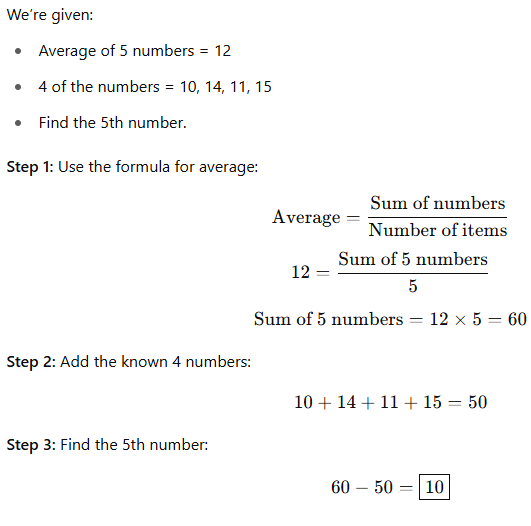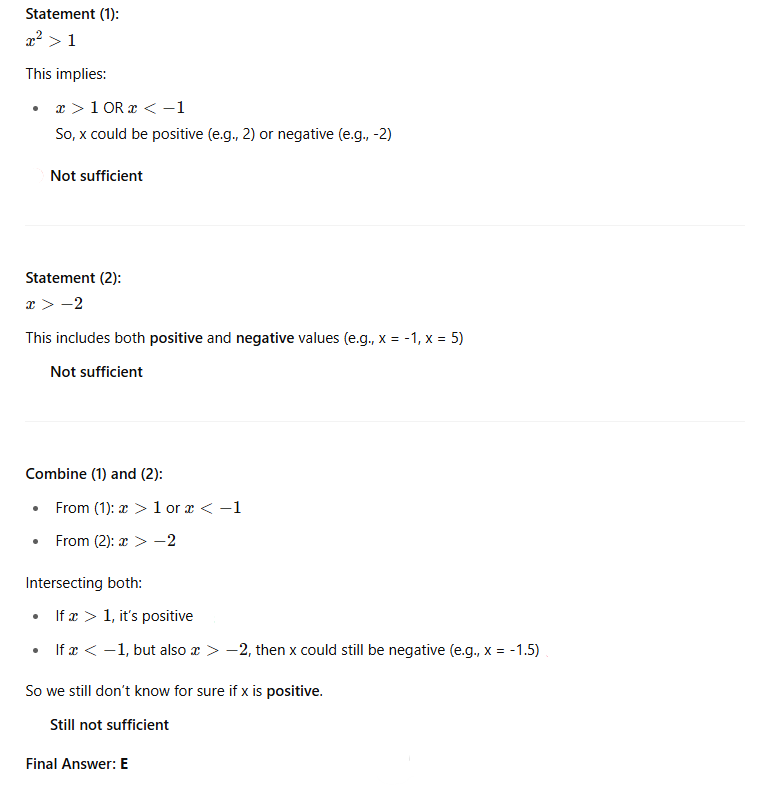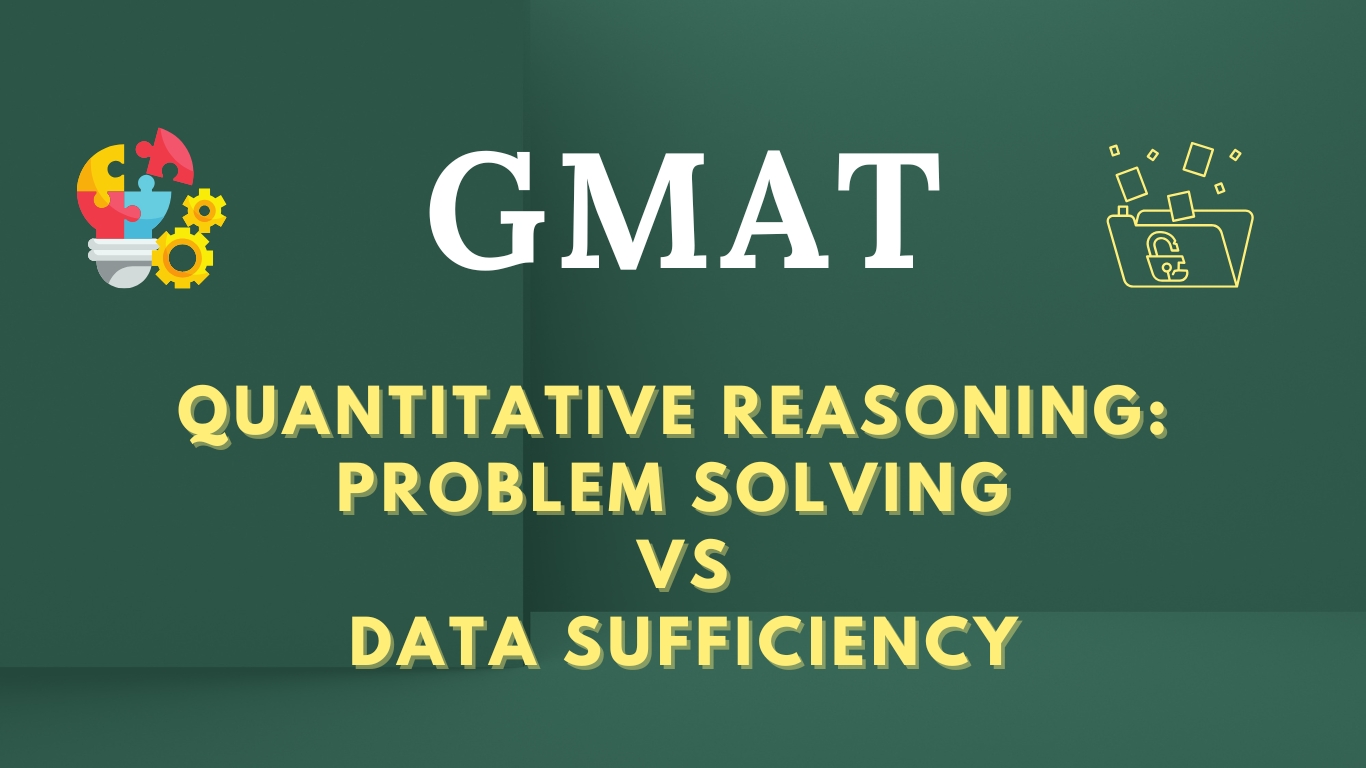Picture this: you're deep in the GMAT Quant section, pencil in hand, brain firing on all cylinders, when suddenly—bam! A wild Data Sufficiency question appears. You panic. “Is this math... or some kind of logic riddle from a game show?”
If that sounds familiar, don’t worry—you’re not alone. The GMAT Quant section is infamous for being both a brain-buster and a time-eater. But here’s the good news: once you understand the difference between Problem Solving (PS) and Data Sufficiency (DS), it starts to feel more like a strategy game—and yes, strategy games can be fun (and winnable!).
According to GMAC, over 60% of test-takers score higher in Problem Solving than in Data Sufficiency, not because DS is harder, but because it requires a completely different mindset. That’s exactly what we’re diving into here: how to tackle both like a pro, with a little humor and a lot of practical advice.
So whether you're the kind of person who does algebra for breakfast or someone who last saw a fraction in high school, this guide is for you. Let’s turn confusion into clarity—and maybe even have a few laughs along the way!
GMAT Quantitative Section Structure
| Component | Details |
|---|---|
| Number of Questions | 31 |
| Time Limit | 62 minutes |
| Question Types | Problem Solving & Data Sufficiency |
| Question Format | Multiple-choice (5 options per question) |
| Calculator Allowed | Not allowed in Quant section |
| Skills Tested | Arithmetic, Algebra, Geometry, Data Analysis |
| Adaptive Format | Yes (question difficulty adjusts in real-time) |
GMAT Quantitative Scoring
| Aspect | Details |
|---|---|
| Section Score Range | 6 to 51 |
| Total GMAT Score Impact | Contributes to overall score (200–800 scale) |
| Average Quant Score | ~40 (according to GMAC data) |
| Percentile Ranking | Varies annually (e.g., 47 = ~76th percentile) |
| Scoring Basis | Number of correct answers + question difficulty (adaptive) |
Problem Solving (PS) – Format & Example
Problem Solving questions are classic multiple-choice math questions. You’re given a question followed by five answer choices, and you must select the one correct answer. These questions test your ability to apply math concepts and logic to solve real problems efficiently.
Example:
If x2=49x^2 = 49, what is the value of xx?
A) -7
B) 0
C) 7
D) 14
E) Cannot be determined
Correct Answer: E (because x can be ±7)
What Skills Are Tested in Problem Solving
| Skill Area | Description |
|---|---|
| Mathematical Reasoning | Applying formulas, rules, and logic to solve numerical problems |
| Analytical Thinking | Breaking down word problems and identifying what’s being asked |
| Time Management | Solving problems under timed conditions |
| Elimination Technique | Using smart guessing or back-solving to eliminate wrong answers |
| Pattern Recognition | Identifying recurring math patterns or structures in questions |
Common Topics in Problem Solving
- Arithmetic
- Algebra
- Geometry
- Word Problems
- Number Properties
- Ratios & Proportions
- Percents
- Statistics (Mean, Median, Mode)
- Probability & Combinatorics
- Coordinate Geometry
- Equations & Inequalities
Data Sufficiency (DS) – Format & Example
Each Data Sufficiency question presents a question followed by two statements labeled (1) and (2). Your job is not to solve the problem but to determine whether the given information is sufficient to answer the question.
You’ll choose from five fixed answer choices:
A) Statement (1) alone is sufficient, but statement (2) alone is not.
B) Statement (2) alone is sufficient, but statement (1) alone is not.
C) Both statements together are sufficient, but neither alone is.
D) Each statement alone is sufficient.
E) Statements (1) and (2) together are not sufficient.
Example:
Is x > 3?
(1) x^2 > 9
(2) x > 0
Correct Answer: C (Individually insufficient, together sufficient)
What Skills Are Tested in Data Sufficiency
| Skill Area | Description |
|---|---|
| Logical Reasoning | Determining sufficiency without solving the full problem |
| Critical Thinking | Avoiding assumptions and identifying what’s truly given |
| Mathematical Knowledge | Understanding of number properties, algebra, geometry, etc. |
| Precision in Analysis | Evaluating each statement alone before combining |
| Decision-Making Speed | Quickly recognizing when to stop calculating and make a sufficiency call |
Common Topics in Data Sufficiency
- Number Properties
- Algebraic Equations
- Inequalities
- Geometry (lines, angles, shapes)
- Word Problems
- Ratios & Proportions
- Percents
- Statistics (Mean, Median, Mode)
- Divisibility & Factors
- Coordinate Geometry
Top Problem Solving Strategies
1. Understand the Question Before You Solve
Don’t rush to calculate. First, ask:
What is being asked?
What information is given?
Are there any hidden conditions?
2. Use Estimation
If the answer choices are far apart (e.g., 100, 1,000, 10,000...), you can estimate to quickly eliminate unrealistic options.
3. Back-Solve Using Answer Choices
Start with Choice C (middle value). Plug it into the problem to see if it works. Then go higher or lower based on the result. This is great for algebra or value-based questions.
4. Pick Smart Numbers
If a question involves variables (like x, y), assign easy numbers (e.g., x = 2, y = 3) to simplify calculations. Just be careful that your choice doesn’t violate any condition (e.g., can't use zero if the variable is in the denominator).
5. Look for Patterns
Especially helpful in number properties and sequences. Identifying a pattern can help you solve faster without detailed calculations.
6. Draw a Diagram
For geometry or visual problems, a quick sketch can help make sense of the data and reduce errors.
7. Eliminate Wrong Answers First
Start crossing off obviously wrong or illogical options. This increases your odds even if you guess.
8. Keep Calculations Clean and Organized
Avoid sloppy math. If you're doing scratch work, keep it clear to avoid double-checking everything.
9. Don’t Over-Solve
If a question asks, “Which of the following must be true?” — resist the urge to solve fully. Logic and reasoning often suffice.
10. Manage Time Wisely
Don’t get stuck. Each question is worth about the same. If it’s taking more than 2 minutes and you’re not getting anywhere, make an educated guess and move on.
Top Data Sufficiency Strategies
1. Memorize the Answer Choices
The DS answer choices never change, so memorize them to save time and avoid rereading.
A) Statement (1) alone is sufficient
B) Statement (2) alone is sufficient
C) Both statements together are sufficient
D) Each statement alone is sufficient
E) Even both statements together are not sufficient
2. Evaluate Each Statement Separately First
ALWAYS check statement (1) alone first, then statement (2) alone—don’t mix them unless both are insufficient on their own.
3. Avoid Unnecessary Calculations
Remember, you’re checking for sufficiency, not solving the actual problem.
If you know an equation has only one solution, you’re done—no need to compute the answer!
4. Be Wary of Assumptions
GMAT loves to trap you with statements that "feel true." Stick to the exact information given—don’t assume values or directions unless explicitly stated.
5. Test Multiple Scenarios
Especially for inequalities, absolute values, or number properties, try plugging in different values (e.g., positives, negatives, fractions, zero) to test for consistency or ambiguity.
6. Look for "Hidden" Info
Statements may contain information disguised in equations or phrasing. Simplify expressions or rephrase logic to uncover what’s truly being told.
7. If One Is Sufficient, Eliminate Three Choices
Once you determine a statement (say, statement 1) is sufficient, immediately eliminate B, C, and E. That leaves you with only A or D.
8. Use Process of Elimination
Even if you’re unsure, eliminating clearly wrong answer choices can increase your odds. Remember, guessing smart is better than getting stuck.
9. Don’t Get “Mathy” Unless Needed
Many DS questions are logic-based. Think strategically: sometimes a question can be answered just by understanding the structure, not crunching numbers.
10. Practice Pattern Recognition
GMAT uses similar traps and formats across questions. With enough practice, you’ll start recognizing repeat logic patterns—and answering faster with confidence.
Problem Solving Vs Data Sufficiency
| Aspect | Problem Solving (PS) | Data Sufficiency (DS) |
|---|---|---|
| Objective | Find the exact correct answer | Determine if given info is sufficient to answer the question |
| Answer Choices | 5 different numerical or logical outcomes | 5 fixed choices (A–E) based on statement sufficiency |
| Calculation Required | Often requires full solution or simplification | Usually stops at determining sufficiency—not solving fully |
| Strategy Focus | Apply math concepts to solve | Apply logic and test conditions for sufficiency |
| Common Traps | Time-consuming calculations, misreading the question | Assuming too much, combining statements too early |
| Skills Emphasized | Arithmetic, algebra, geometry, word problems | Logical reasoning, critical thinking, variable testing |
| Difficulty Type | More direct, computational difficulty | Trickier due to logic and potential for multiple cases |
| Approach Style | Solve like traditional math problems | Think like a detective—prove whether solving is possible |
| Time Management Tip | Avoid lengthy calculations; use shortcuts | Avoid solving completely—focus on "can it be solved?" |
Practice Question: Problem Solving
If the average (arithmetic mean) of five numbers is 12, and four of the numbers are 10, 14, 11, and 15, what is the fifth number? (GMAT – 2016)
Solution:

Practice Question: Data Sufficiency
Is x>0? (GMAT – 2015)
(1) x^2 > 1
(2) x > −2
Solution:
Let’s evaluate each statement separately first.

Conclusion
So, here’s the truth: GMAT Quant is not about being a math genius, it’s about being a clever, strategic thinker with a good sense of timing—kind of like a ninja... with a calculator.
Remember:
Problem Solving is about finding the answer.
Data Sufficiency is about knowing if you even can find the answer.
It’s a subtle shift, but a game-changer.
Want some perspective? Only 12% of GMAT takers score in the top Quant percentile, and the ones who do aren’t necessarily math majors—they’re just well-practiced and well-prepared (GMAC 2023 report). So, instead of fearing the numbers, make friends with them.
Laugh at your mistakes, learn from every question, and keep practicing. And next time a Data Sufficiency question tries to mess with you, just smirk and say, “Nice try, GMAT. I read a blog about you.”
